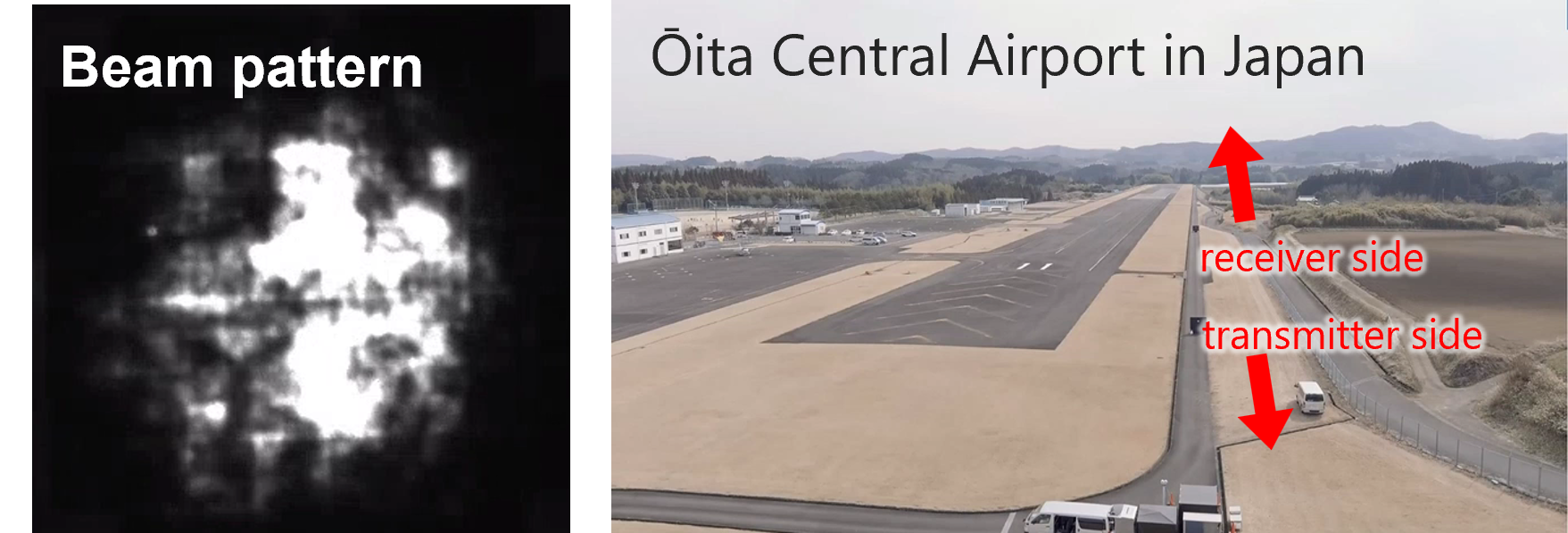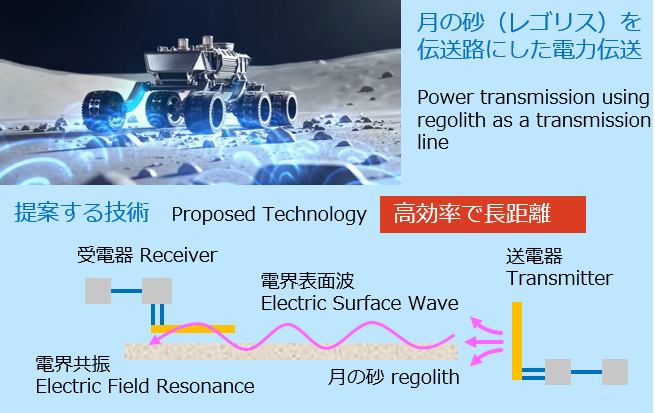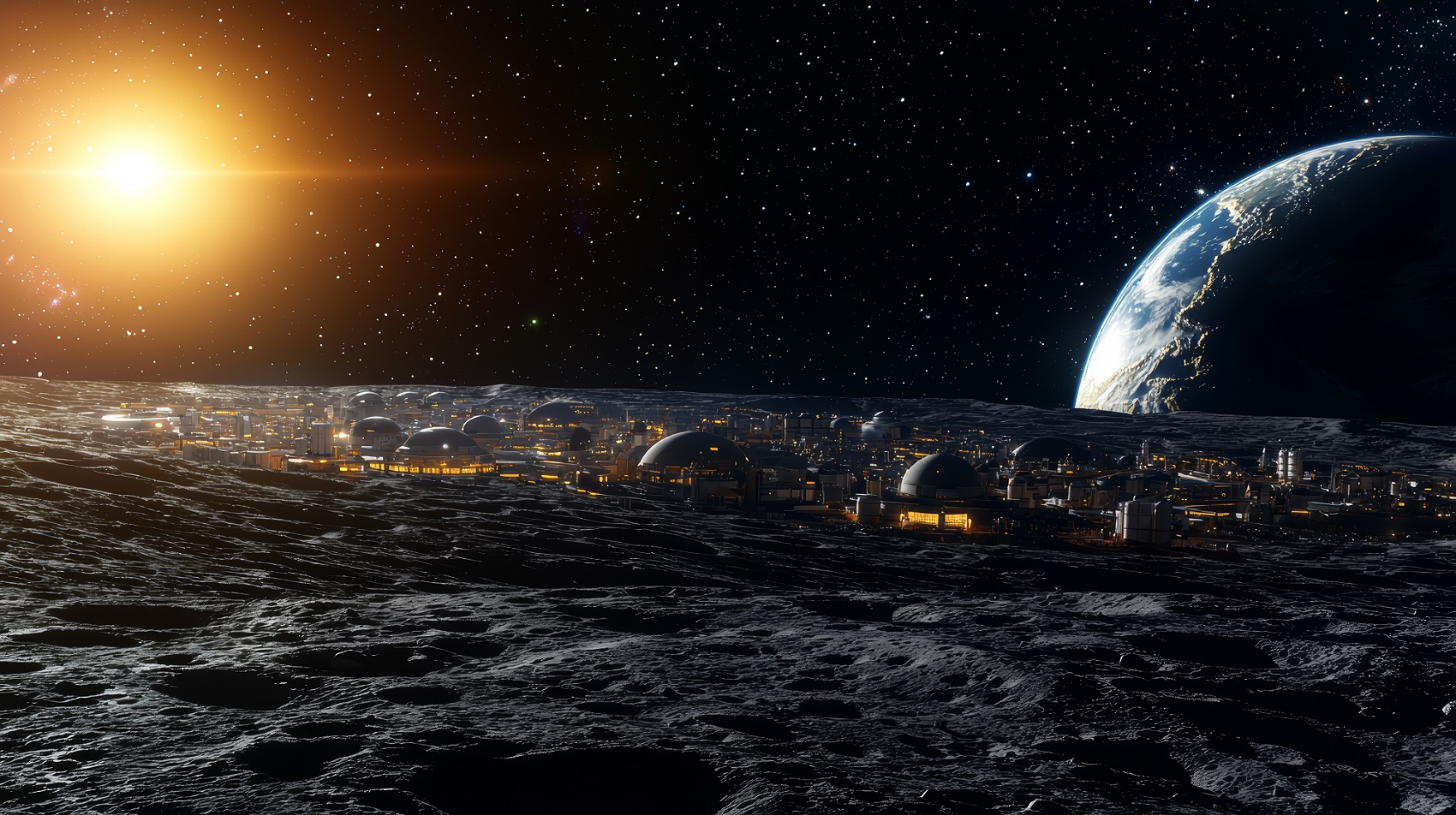- 2025.04.01 Tue
The Future Energy Revolution: Wireless Power Transmission on the Moon


Interviews with experts from various industries on the theme of How would you use space? The second speaker in this column is Ms. Madoka Takahashi from NTT Space Environment and Energy Research Institute. Ms. Takahashi is working on technologies to realize a lunar society.
“With the Artemis program of NASA and JAXA’s SLIM lunar landings, the moon is becoming more accessible. The prospect of people living on the moon in the coming years is truly exciting. One essential element for sustaining life is power. In this article, we introduce the research on wireless power transmission on the moon by the Next-Generation Energy Technology Group at NTT Space Environment and Energy Research Institute.
- 01.
- Will Wireless Power Transmission Become Mainstream? - Challenges of Wired Infrastructure on the Moon
- 02.
- Long-Distance Wireless Power Transmission - Laser and Microwave Transmission
- 03.
- Short-Distance Wireless Power Transmission Using Resonance - Magnetic and Electric Field Resonance
- 04.
- Conclusion - Envisioning a Lunar Society

Madoka Takahashi, NTT Space Environment and Energy Research Institute, Next-Generation Energy Technology Group (Japan)
●Profile
Madoka Takahashi began her career as a researcher at NASDA (now JAXA) in Japan, focusing on material research using an electrostatic levitation furnace. She then joined JAMSS, where she was involved in the operation of the International Space Station, astronaut training support, space experiment integration, and proof tests for safety. Transitioning to a heavy machinery manufacturer, Takahashi promoted research, research management, and technical planning in aerospace and energy materials. Later, she managed space business at a consulting firm while also working with a startup on hybrid rocket engines. Currently, Takahashi leads research on wireless power transmission for space solar power and optimal fusion operation technologies at NTT Space Environment and Energy Research Institute.
Establishing infrastructure on the moon presents numerous challenges distinct from those on Earth, one of which is the high transportation cost. Current technology estimates that transporting 1 kg of material to the moon costs more than 655K USD. Therefore, bringing long-distance wired cables is highly expensive and impractical.
The moon's surface is covered with fine, sandy material called regolith, composed mainly of metal oxides such as SiO2 and Al2O3. Extracting metals from regolith to manufacture wired cables requires advanced refining technology and a significant amount of energy. Additionally, regolith is prone to static electricity, which poses risks of equipment contamination resulting in electrical shorts, conductive failure, or mechanical failure. This makes the installation and maintenance of wired infrastructure challenging.
Given these constraints, wireless technology, which does not require physical cables, is considered a mainstream option for lunar applications.
Laser and microwave transmission are two promising options for power transmission in space, each with unique advantages and challenges, suitable for different environments and purposes. However, lasers are susceptible to weather conditions such as rain and clouds on Earth, making stable operation challenging. This issue is not present on the moon, where there is no atmosphere, making laser transmission a powerful tool in the right environment. In addition, the current efficiency of light-to-electricity conversion is around 50%, so in the future it will be necessary to develop photoelectric conversion elements that operate with high efficiency.
NTT Space Environment and Energy Research Institute is focusing on laser transmission, leveraging NTT's long-standing expertise in optical communication technology. The primary strength of laser transmission is its high energy density, allowing efficient transmission by concentrating energy at a single point. Lasers' high directivity enables precise energy delivery to specific targets, potentially reducing the size and cost of transmission and reception equipment. However, lasers are susceptible to weather conditions such as rain and clouds on Earth, making stable operation challenging. This issue is not present on the moon, where there is no atmosphere, making laser transmission a powerful tool in the right environment. In addition, the current efficiency of light-to-electricity conversion is around 50%, so in the future it will be necessary to develop photoelectric conversion elements that operate with high efficiency.
Microwave transmission, on the other hand, is less affected by weather conditions, making it stable for use on Earth and in dusty environments such as Mars. Microwaves are relatively safe and suitable for wide-area power transmission. However, their lower directivity means that the equipment and systems tend to be larger, which can be a drawback in weight- and space-constrained environments such as the moon.
By leveraging the strengths and compensating for the weaknesses of both laser and microwave transmission, we can unlock new possibilities for power utilization in space.

We are focusing on "resonance phenomena" to efficiently transmit power over short distances. There are two main types of resonance technologies: magnetic field resonance and electric field resonance, each with distinct characteristics.
Magnetic field resonance transmits power through a magnetic field by resonating coils on the transmitting and receiving sides. This technology is stable and versatile, unaffected by environmental factors or obstacles.
Examples include wireless charging for smartphones and electric vehicles. However, the effective transmission range is limited to a few centimeters to a few meters, making it ideal for short-distance, stable applications.
Electric field resonance uses thin metal plates (antennas) to transmit power from the transmitter to the receiver. Adjusting both to the same resonant frequency dramatically improves transmission efficiency. This technology can transmit power over longer distances using dielectric (insulating) materials, with surface waves playing a key role. Surface waves travel along the surface of dielectrics or insulators, efficiently transmitting power. On the moon, regolith, a dielectric material, could enable efficient power supply to rovers and bases using electric field resonance. NTT Space Environment and Energy Research Institute is advancing research in this area, anticipating its future role in lunar exploration.
Looking ahead, these technologies will evolve complementarily. For instance, electric field resonance could support energy supply to rovers and bases on the moon, while magnetic field resonance could handle charging for electric vehicles and smart devices on Earth, meeting diverse needs.

The moon has a unique location called the "Peak of Eternal Light," where sunlight is available for over 80% of the year. This area is a prime candidate for lunar base sites, holding potential for humanity's future. However, overcoming the challenges of dark areas and long lunar nights is crucial for sustained lunar activities. We envision a new power transmission system connecting the "Peak of Eternal Light" with nearby permanently shadowed craters (e.g., Shackleton Crater).
Our goal is a power transmission system combining laser and electric field resonance technologies. Power generated at the "Peak of Eternal Light" would be converted to laser and transmitted to craters, providing energy to shadowed areas. This system would support extensive energy distribution on the moon and serve as a lifeline for exploration and activities within craters. Additionally, within craters, laser-transmitted power would be delivered to rovers and equipment using electric surface wave technology, enabling cable-free energy supply and flexible exploration and operations.
This power transmission system would revolutionize lunar exploration. Rovers could move freely within shadowed craters, conducting water resource extraction and analysis without worrying about power shortages, accelerating resource utilization on the moon. Cable-free power supply would allow flexible placement and movement of exploration equipment. A sustainable infrastructure encompassing the entire moon would facilitate smooth exploration and activities, not just around bases but also in remote areas.
Our proposal for wireless power transmission on the moon goes beyond mere technological innovation. It marks a crucial step in expanding human potential on the lunar surface and accelerating space exploration and expansion. By harnessing solar energy and employing laser and electric surface wave technologies, we aim to create a sustainable society on the moon and open up a new frontier for humanity.



